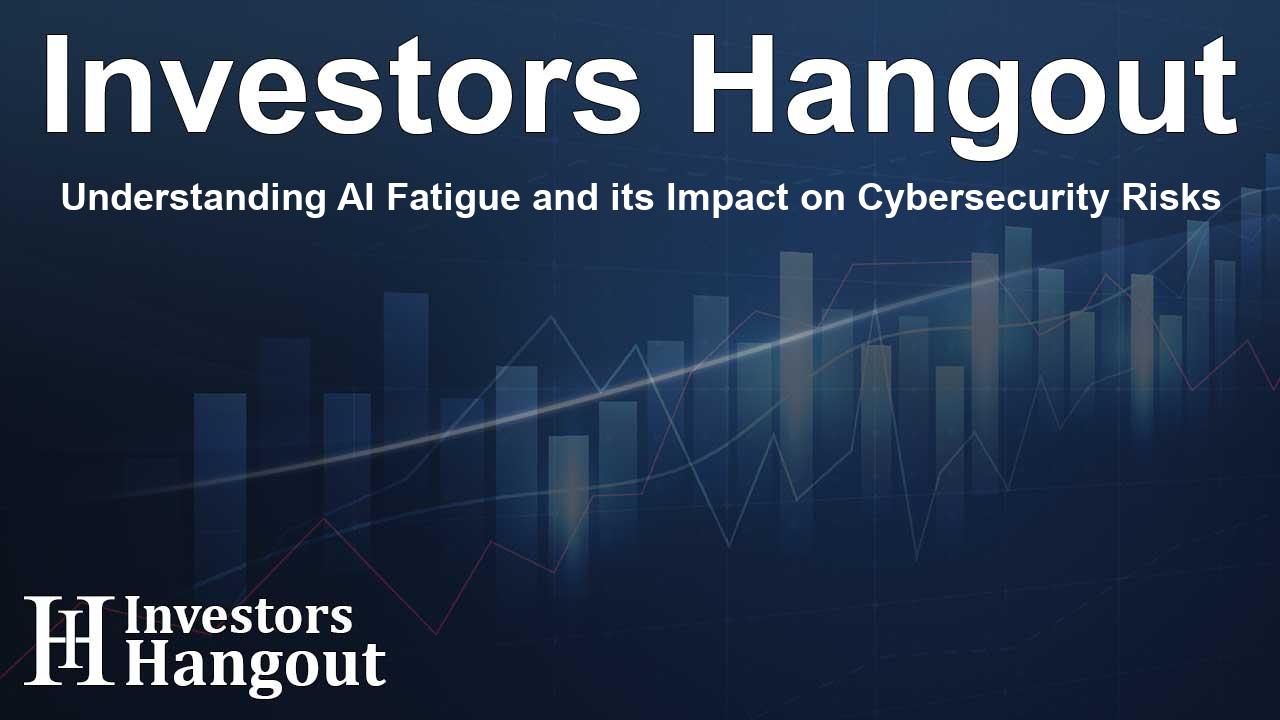Understanding AI Fatigue and its Impact on Cybersecurity Risks

Understanding AI Fatigue in Cybersecurity
In the fast-paced world of technology, AI is continuously reshaping various industries. However, with this rapid advancement comes a concerning trend known as AI fatigue. This phenomenon manifests as an overwhelming sense of fatigue among executives due to the constant barrage of AI-related updates and risks. Cybersecurity experts warn that this fatigue can create vulnerabilities that hackers are poised to exploit.
The Dangers of Complacency
Complacency in leadership can be every bit as dangerous as technical failures. Drew Hendrickson, a Cybersecurity Practice Leader at LBMC, emphasizes that as executives start to trust machines without fully understanding their limitations, they become easy targets for cyber attackers. This complacency signals a shift from AI risk management to addressing AI fatigue management. Executives must recognize that just because a system is automated does not mean it is infallible.
Recognizing the Signs of AI Fatigue
AI fatigue often leads to a false sense of security. Executives might feel reassured that their AI systems are monitoring risks, only to find themselves overwhelmed by ongoing decision-making processes. Many leaders find themselves increasingly distracted, creating openings for bad actors to mount successful attacks. Cori Macy from LBMC highlights a worrying rise in AI-assisted phishing success rates, demonstrating that the fatigue experienced by executives plays right into the hands of hackers.
Learning from Recent Incidents
A key example of the dangers of AI mismanagement was highlighted during the Blue Yonder ransomware incident. This breach not only disrupted essential supply chains but also illustrated how negligence around AI can lead to profound cybersecurity failures. Security systems built for speed often miss nuanced threats, making it crucial for businesses to understand the limits of their AI tools.
Five Critical Indicators of Executive Apathy
Leaders must be attuned to behaviors that reveal a lack of engagement. Here are five indicators to consider:
- Overreliance on AI-generated reports without thorough examination.
- Reduction in the frequency and seriousness of cybersecurity meetings.
- A focus on merely passing compliance audits instead of understanding real vulnerabilities.
- Skipping regular simulation training as they are seen as non-urgent.
- Assuming a single cybersecurity tool is sufficient to handle all threats.
Noticing these signs is critical for improving an organization's resilience and trust. Hendrickson points out that AI fatigue can be likened to a flat tire; it may not be apparent until the vehicle (or organization) fails to perform.
Emphasizing Continuous Cyber Vigilance
In the world of cybersecurity, a one-time penetration test is simply not enough. Hackers are evolving faster than many companies can react. LBMC has introduced the LBMC Guard, a solution that performs continuous penetration testing and vulnerability scanning, staying one step ahead of threats. This ongoing vigilance is not just about having tools in place; it is a proactive mindset that CISO should adopt.
Integrating Compliance for Enhanced Defense
Another point of focus is how fatigue can create gaps in compliance. LBMC’s Cyber Core initiative aims to support busy executives by streamlining cyber leadership tasks, allowing teams to effectively manage risks and align cybersecurity efforts with broader business goals.
Reengaging Leaders in Cybersecurity Conversations
The message to leadership teams is clear: while they may not be directly involved in developing AI models, their engagement is absolutely essential in combating cybersecurity threats. Hackers are not just targeting systems but are exploiting executive fatigue, making it critical for leaders to reengage with the topic of cybersecurity.
Hendrickson encapsulates this perfectly: “Cybersecurity has always been a leadership issue. Now, AI fatigue is morphing it into a leadership vulnerability.”
To stay informed or connect with cybersecurity experts, reach out to LBMC for guidance tailored to your organization’s needs.
Frequently Asked Questions
What is AI fatigue?
AI fatigue refers to the overwhelming feeling and complacency that executives may experience due to constant updates and decisions related to AI technologies.
How does AI fatigue impact cybersecurity?
It can create vulnerabilities as executives may overlook critical security details, leading to increased cyber risks and potential breaches.
Why is continuous vigilance necessary in cybersecurity?
Continuous vigilance ensures that organizations can quickly adapt and respond to evolving threats, rather than relying on outdated security measures.
What should leaders focus on to combat AI fatigue?
Leaders should actively engage with their cybersecurity teams and prioritize direct understanding and oversight of their security posture to mitigate risks.
What practices can help in maintaining compliance?
Integrating compliance efforts into a comprehensive strategy and prioritizing regular training and updates can assist organizations in enhancing their compliance posture effectively.
About The Author
Contact Kelly Martin privately here. Or send an email with ATTN: Kelly Martin as the subject to contact@investorshangout.com.
About Investors Hangout
Investors Hangout is a leading online stock forum for financial discussion and learning, offering a wide range of free tools and resources. It draws in traders of all levels, who exchange market knowledge, investigate trading tactics, and keep an eye on industry developments in real time. Featuring financial articles, stock message boards, quotes, charts, company profiles, and live news updates. Through cooperative learning and a wealth of informational resources, it helps users from novices creating their first portfolios to experts honing their techniques. Join Investors Hangout today: https://investorshangout.com/
The content of this article is based on factual, publicly available information and does not represent legal, financial, or investment advice. Investors Hangout does not offer financial advice, and the author is not a licensed financial advisor. Consult a qualified advisor before making any financial or investment decisions based on this article. This article should not be considered advice to purchase, sell, or hold any securities or other investments. If any of the material provided here is inaccurate, please contact us for corrections.
